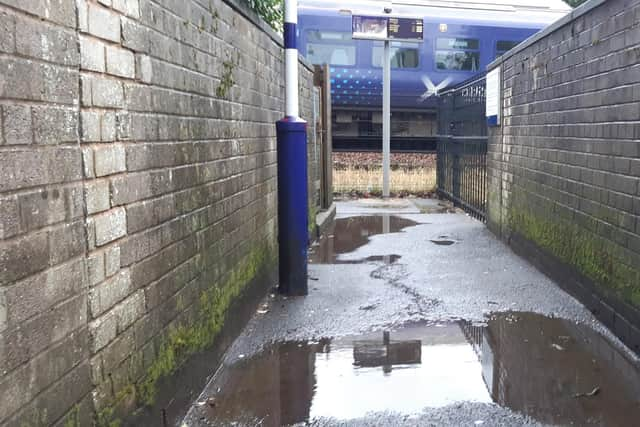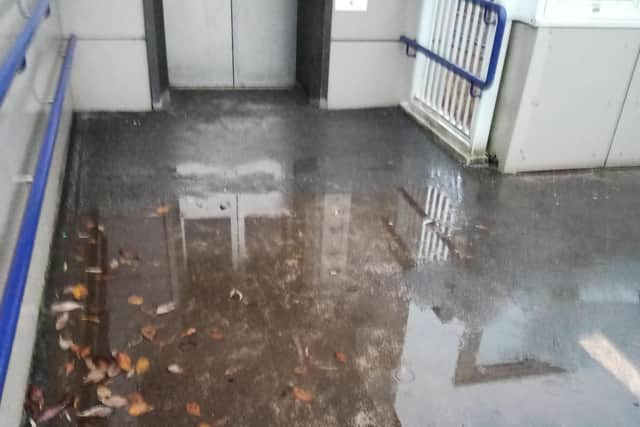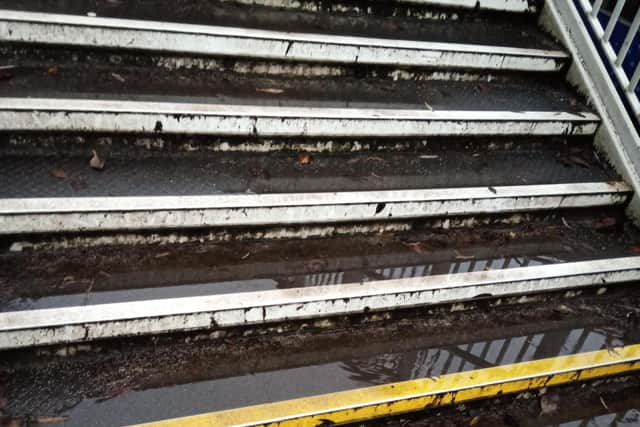Stonehaven train crash: Network Rail should now adopt a ‘broken window’ approach to maintenance, starting with a flooded path – Alastair Dalton
Popularised in New York City in the 1990s, the theory goes something like this: smashed panes symbolise neglect, signalling a rundown area that’s not cared for, which then attracts further vandalism, destruction and litter in a vicious, downward spiral.
But if you were to repair the window, there’s a chance of nipping the problem in the bud before things get out of hand.
Advertisement
Hide AdAdvertisement
Hide AdIf there’s no visible evidence of such anti-social behaviour, would-be vandals might think again, or go elsewhere, rather than make the first mark.


It should be the same with the general upkeep of railway stations.
Keeping them clean, and repairing faults and breakages, helps instil confidence in passengers about using the rail network.
By and large, this has been achieved on the Scottish rail network, in good part through a penalty and incentive scheme pioneered by Transport Scotland which sets the bar deliberately high to encourage improvements.
If current ScotRail operator Abellio fails to meet exacting standards on dozens of measures covering every aspect of trans and stations, it incurs hefty fines that are then reinvested in the railway.


But surpass them and the firm receives bonus payments.
However, I’ve noticed an apparent flaw in this system – although ScotRail operates nearly every station in Scotland, Network Rail owns them, and is responsible for part of their upkeep.
This includes some access routes, such as paths and footbridges.
To give an example, at one busy station in Glasgow, flooding has become a chronic irritant to passengers trying to get in and out without getting their feet wet.


Advertisement
Hide AdAdvertisement
Hide AdThe entire width of one entry point regularly floods, forcing travellers to leap across a large puddle.
It’s even worse on an access footbridge which was only installed around a decade ago.
When it rains, pools of water fill the steps, while mini lochs form around the entrance to the lifts.
Meantime, the vertical sides to the steps do not appear to have been cleaned since they were installed, which seems to be either a design flaw or an unsightly maintenance omission. Surely such problems aren’t unique to this one station.
I have repeatedly asked Network Rail about these issues for three months, to no avail.
I was reminded once again about this ridiculous situation when reading about Network Rail’s many and woeful failings over the fatal train crash at Carmont near Stonehaven, highlighted in the Rail Accident Investigation Branch’s (RAIB) final report into the incident last week.
Of course, the flooding I described and the apparent lack of action to address it are at the opposite end of the scale to what went wrong after that fateful storm in Aberdeenshire in 2020.
However, it did get me wondering about how atypical or otherwise my own experience of Network Rail’s station maintenance regime might be.
Advertisement
Hide AdAdvertisement
Hide AdThe infrastructure body had built up an enviable safety record over an unprecedented 13 years since the last death on a train in Britain.
Carmont ended that – and the RAIB report shattered the notion that the railways are being run as safely as they could be.
Time for a broken windows approach – from that flooded path upwards.
A message from the Editor:
Thank you for reading this article. We're more reliant on your support than ever as the shift in consumer habits brought about by coronavirus impacts our advertisers.
If you haven't already, please consider supporting our trusted, fact-checked journalism by taking out a digital subscription.
Comments
Want to join the conversation? Please or to comment on this article.
